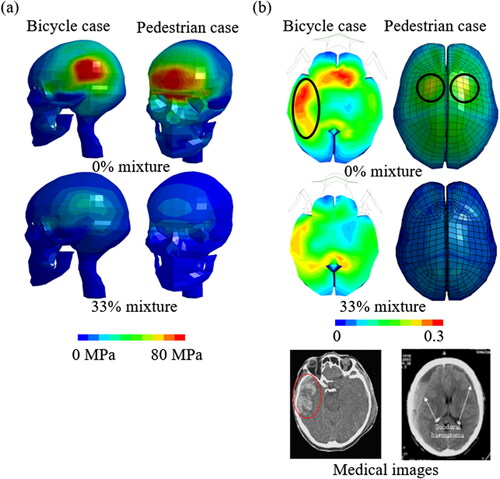Figures & data
Figure 1. Linear regression analysis of maximum acceleration from the HIC drop test results and the simulation results for each asphalt sample.

Figure 2. (a) Comparison of peak von Mises stresses (MPa) on the cortical bone between the 0% and 33% rubber contents. The level of plasticity for cortical bone was set to 80.0 MPa. The highest stresses on the skull bone occurred at the impact position for the individual case; (b) Comparison of the peak 1st principal Green-Lagrange strain on the brain tissue between 0% and 33% rubber contents. The black circles correspond to the reported medical records of head injury in the bicycle and pedestrian case. Medical image for the bicycle case is from The Accident Analysis & Prevention, Vol. 91, Madelen Fahlstedt, Peter Halldin, Svein Kleiven, The protective effect of a helmet in three bicycle accidents—A finite element study, 135–43, Copyright (2021, Licence number: 5218740986803), with permission from Elsevier; the injury region is marked with a red circle. Medical image for the pedestrian case is from “An in-depth analysis of real world fall accidents involving brain trauma.” (2009), Michael D. Gilchrist and Mary C. Doorly, Copyright (CC BY-NC-ND 3.0 IE), the injury region is marked with arrows.

Table 1. Simulation results of the pedestrian accident on different rubberized asphalt samples.
